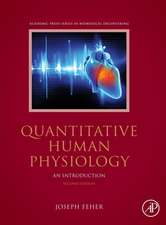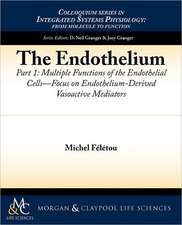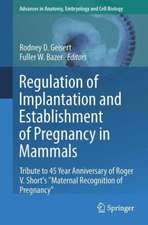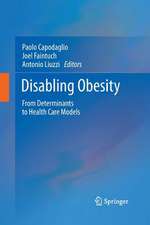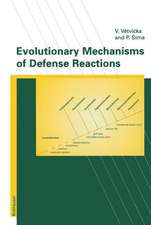Adaptation, Stress, and Prophylaxis
Autor F. Z. Meerson Traducere de J. Shapiroen Limba Engleză Paperback – 12 oct 2011
Preț: 721.05 lei
Preț vechi: 758.99 lei
-5% Nou
Puncte Express: 1082
Preț estimativ în valută:
137.97€ • 143.77$ • 114.24£
137.97€ • 143.77$ • 114.24£
Carte tipărită la comandă
Livrare economică 03-17 aprilie
Preluare comenzi: 021 569.72.76
Specificații
ISBN-13: 9783642617300
ISBN-10: 3642617301
Pagini: 344
Ilustrații: X, 330 p.
Dimensiuni: 170 x 244 x 18 mm
Greutate: 0.55 kg
Ediția:Softcover reprint of the original 1st ed. 1984
Editura: Springer Berlin, Heidelberg
Colecția Springer
Locul publicării:Berlin, Heidelberg, Germany
ISBN-10: 3642617301
Pagini: 344
Ilustrații: X, 330 p.
Dimensiuni: 170 x 244 x 18 mm
Greutate: 0.55 kg
Ediția:Softcover reprint of the original 1st ed. 1984
Editura: Springer Berlin, Heidelberg
Colecția Springer
Locul publicării:Berlin, Heidelberg, Germany
Public țintă
ResearchCuprins
1 - Basic Regularities of Phenotypic Adaptation.- Systemic Structural Trace: The Basis of Adaptation.- Interrelation Between Function and Genetic Apparatus: The Basis for Forming the Systemic Structural Trace.- Interrelationship of Cell Structures: A Parameter Determining the Functional Possibilities of the System Responsible for Adaptation.- Reversibility of Adaptation: Physiologic and Pathologic Deadaptation.- 2 - Role of Stress Reaction in Urgent and Long-term Adaptation.- Stress Mobilization and Redistribution of Resources.- Stress-enhanced Resistance to Hypoxia.- Lipotropic Effect of Stress in Biomembranes.- Antioxidant Effect of Glucocorticoids and the Influence of Synthetic Antioxidants on Urgent Adaptation to Physical Loads.- Post-stress Activation of Nucleic Acid and Protein Synthesis and Its Role in Forming Long-term Adaptation.- General Mechanism and Principal Stages of Phenotypic Adaptation.- 3 - Development of Adaptation to Hypoxia and Its Preventive Use.- Systemic Structural Trace and Principal Stages of Adaptation to Hypoxia.- 4 - Compensation, a Form of Adaptational Response of an Injured Organism.- 5 - Systemic Structural Trace: Foundation of Memory and Higher Adaptational Responses.- Relationship Between Memory and Adaptation.- Role of Emotional Stress in Forming Higher Adaptational Responses. Unity of Dynamics in Forming Conditioned Reflexes and Other Adaptational Responses.- Main Stages of the Development of Conditioned Reflex. Differences and Common Features of Higher and Simple Adaptational Responses.- Effect of Adaptation to Hypoxia on the Formation of Temporary Connections. Behavior and Brain Resistance to Harmful Factors.- 6 - Stress and Stress Damage.- Damaging Stress Situation and Pathogenesis of Stress Stomach Ulcers.- Pathogenesis of Stressand Ischemic Injuries of the Heart.- Stress: A Basic Etiologic Factor of Noninfectious Human Diseases. Its Role in the Origin of Ischemic Heart Disease and Tumors.- 7 - Adaptation to Stress Situations and Systems for Natural Prevention of Stress-induced and Ischemic Injuries.- Activation of the GABA-ergic Inhibitory System Under Stress as a Natural Mechanism for Preventing Stress-induced and Ischemic Injuries.- Blockade of Physiologic Effects of Calcium: Its Role in Preventing Ischemic and Stress Damages.- Role of the Adenine Nucleotide System and Its Product Adenosine in Preventing Energy Shortage and Limiting Adrenergic Effects.- Activation of the Prostaglandin System: A Factor for Preventing Stress and Ischemic Damages.- 8 - Antioxidant Factors in the Organism: A System of Natural Prevention of Stress-induced and Ischemic Injuries.- Antioxidant Systems and Action Mechanisms of Exogenous Antioxidants.- Antioxidant Protection of the Heart Against Hypoxia, Ischemia, and Reoxygenation.- Conclusion.- References.

